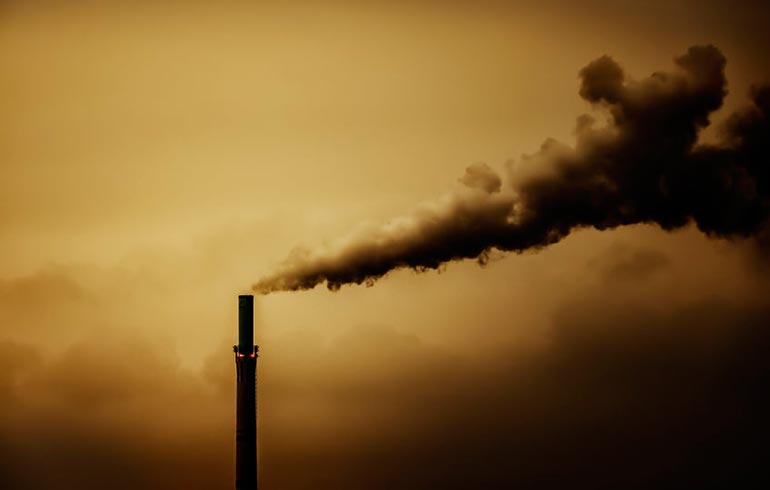High GWP byproduct of R22 growing at alarming rate
21st January 2020
UK: HFC23, a potent greenhouse gas created as a byproduct of the manufacture of ozone-depleting refrigerant R22, has been found to be growing at record levels in the atmosphere.
This is despite reports that global emissions of HFC23, a gas with a GWP of 12,400, were almost eliminated in 2017.
An international team of scientists, led by the UK’s University of Bristol, insist the levels of HFC23 are at record values as a result of it being vented during the production of R22 by developing countries.
Starting in 2015, India and China, thought to be the main emitters of HFC23, announced ambitious plans to abate emissions in factories that produce the gas. As a result, they reported that they had almost completely eliminated HFC23 emissions by 2017.
In response to these measures, scientists were expecting to see global emissions drop by almost 90% between 2015 and 2017, which should have seen growth in atmospheric levels grind to a halt.
Now, the researchers have shown, in a paper published today in the journal Nature Communications, that concentrations were increasing at an all-time record by 2018.
The Nature paper reports that HFC23 emissions in 2017 were at an all-time high of 15.9Gg/yr (15,900 tonnes) – equivalent to the annual emissions from about 50 coal-fired power plants.
Dr Matt Rigby, who co-authored the study, is a reader in atmospheric chemistry at the University of Bristol and a member of the Advanced Global Atmospheric Gases Experiment (AGAGE), which measures the concentration of greenhouse gases around the world, said: “When we saw the reports of enormous emissions reductions from India and China, we were excited to take a close look at the atmospheric data.
“This potent greenhouse gas has been growing rapidly in the atmosphere for decades now, and these reports suggested that the rise should have almost completely stopped in the space of two or three years. This would have been a big win for climate.”
Dr Kieran Stanley, the lead author of the study, visiting research fellow in the University of Bristol’s School of Chemistry and a post-doctoral researcher at the Goethe University Frankfurt, added: “To be compliant with the Kigali Amendment to the Montreal Protocol, countries who have ratified the agreement are required to destroy HFC23 as far as possible.
“Our study finds that it is very likely that China has not been as successful in reducing HFC23 emissions as reported. However, without additional measurements, we can’t be sure whether India has been able to implement its abatement programme.”
Millions of dollars
Both China and India have received millions of dollars to destroy HFC23 through the discredited internal carbon trading mechanisms. In 2011 it was claimed that some R22 producers, primarily in China and India, were deliberately maximising the production of unwanted HFC23 just to receive carbon credits for its ultimate destruction. When the EU subsequently rejected the HFC23 carbon credits from its Emissions Trading Scheme to curtail the practice, China threatened to release huge amounts of HFC23 to atmosphere.
Eventually, both China and India pledged to continue to destroy HFC23 through national measures, the former in response to receiving $385m from the Montreal Protocol to phase out production of ozone-depleting R22.
“Destroying HFC23 byproduct emissions is one of the most cost-effective climate mitigation opportunities available to countries,” commented Avipsa Mahapatra, climate campaign lead of environmental group, the Environmental Investigation Agency (EIA). “It is a shame that HFC23 emissions continue to grow despite the billions of dollars companies (and through taxes, their governments) have already received to deal with this. Any venting of HFC23 is a colossal scandal and morally unacceptable given the climate crisis today.”
Although the Nature paper does not attempt to geographically pinpoint the source of the emissions, Mahapatra’s colleague and fellow EIA climate campaigns leader, Clare Perry, said is it was highly likely that China plays a significant role – given that China has 68% of global production capacity for HCFC22. Perry says that India also has five companies that produce HCFC22 and could be venting HFC23, despite a 2016 Government order to ensure all HFC23 is incinerated.
Describing the venting as “a climate crime of epic proportions”, Perry said: “Coming on the back of the illegal production and use of ozone-destroying CFC11 in China, this warrants a renewed effort by China to ensure zero HFC23 emissions and a renewed effort by the Montreal Protocol to control ozone-depleting substances such as HCFC22 that are used in the production of other chemicals.
“China, India and all countries with HCFC22 production need to immediately investigate and verify their HFC23 emissions.”
Related stories:
India to cease emitting HFC23 – 15 October 2016
INDIA: In addition to agreeing an HFC phase down, India has also decreed that its chemical industry must collect and destroy emissions of its most potent greenhouse gas, HFC23. Read more…







